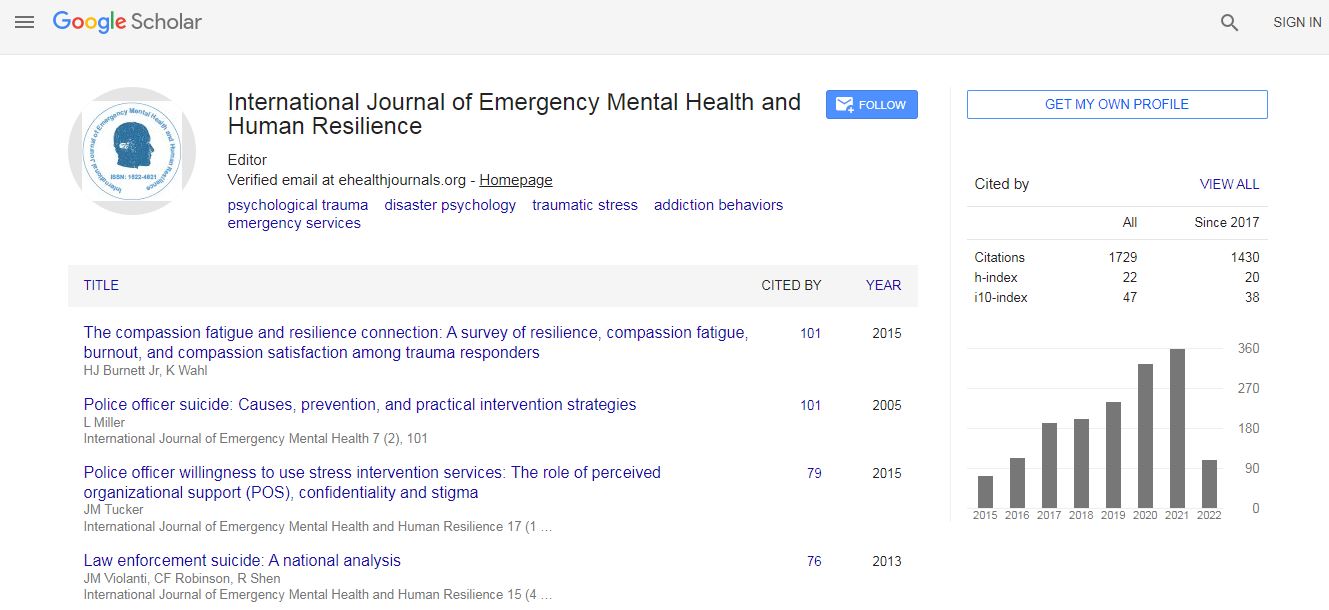Our Group organises 3000+ Global Conferenceseries Events every year across USA, Europe & Asia with support from 1000 more scientific Societies and Publishes 700+ Open Access Journals which contains over 50000 eminent personalities, reputed scientists as editorial board members.
Open Access Journals gaining more Readers and Citations
700 Journals and 15,000,000 Readers Each Journal is getting 25,000+ Readers
Google Scholar citation report
Citations : 4948
Indexed In
- Index Copernicus
- Google Scholar
- CiteFactor
- Publons
- Pubmed
- science Gate
- scispace
- world cat
Useful Links
Related Subjects
Share This Page
Neural mechanisms of behavioral inflexibility in psychostimulant addiction: Markers of vulnerability and compulsive symptoms
3rd International Conference on Mental Health and Human Resilience
Peter Zhukovsky
University of Cambridge, UK
ScientificTracks Abstracts: Int J Emerg Ment Health
Abstract
Statement of the Problem: Behavioral flexibility is at the core of many disorders of compulsivity, including substance use disorder (SUD), obsessive-compulsive disorder (OCD) and schizophrenia. Inflexible behavior has been found to be at the core of these disorders; yet the precise neural changes underpinning the behavioral impairments remain to be clarified. In addition, inflexibility could predispose to development of the disorder rather than arise as a consequence of it. We previously found that diminished serotonergic signaling is crucial to inflexible, perseverative behavior. The current objectives include testing the hypothesis that traitlike variation in behavioral flexibility predicts SUD and exploring the neural mechanisms of compulsivity. Methodology & Theoretical Orientation: Using rat models of human behavior, a carefully controlled study featuring baseline flexibility and anxiety assays, a long-access cocaine self-administration period and further flexibility assays was conducted. Neural changes in receptor availability, inflammatory markers and neurotransmitter availability were examined ex vivo using receptor autoradiography, qRT-PCRs and HPLC. Further, blood samples were analyzed for monoamine content and major serotonergic gene expression. Blood and brain biomarkers were linked to explore the translational role of blood serotonergic and dopaminergic measures in identifying addiction vulnerability. Findings: The neural substrates of compulsive behavior include different aspects of serotonergic circuits, including monoamine oxidase (MAO) activity, serotonin receptor availability and metabolism in prefrontal areas (OFC, mPFC), the striatum and dorsal raphe nuclei of the brainstem. Trait-like variation in compulsive behavior and anxiety has been found to predict subsequent escalation of drug taking along with impulsivity and other traits that were identified previously. Further, self-administration of cocaine resulted in differential changes in neuroinflammatory signals in prefrontal and striatal regions and was related to the changes in dopaminergic and serotonergic receptor binding. Conclusion & Significance: Identifying a predisposition to lose control over drug taking and seeking is crucial to developing interventions that help prevent substance abuse in the first place. Various personality traits, including impulsivity, anxiety and novelty seeking have been found to predict aspects of SUD and clarifying the neural substrates of these traits alongside their correlates in blood could prove vital to translational research seeking to identify the same vulnerabilities in humans.Biography
Peter Zhukovsky specializes in neurobiology of compulsive disorders, with a focus on rodent models of psychostimulant addiction. His aims are two fold; firstly, to help identify vulnerability for drug abuse and thus help prevent it and secondly, to elucidate its key neural mechanisms to help find treatments, both pharmacological and behavioral. Using a recently developed rodent task measuring an aspect of cognitive flexibility, he combines a longitudinal approach with an ecologically valid self-administration paradigm to elucidate neural mechanisms of psycho stimulant addiction.
Email: pz249@cam.ac.uk

 Spanish
Spanish  Chinese
Chinese  Russian
Russian  German
German  French
French  Japanese
Japanese  Portuguese
Portuguese  Hindi
Hindi 